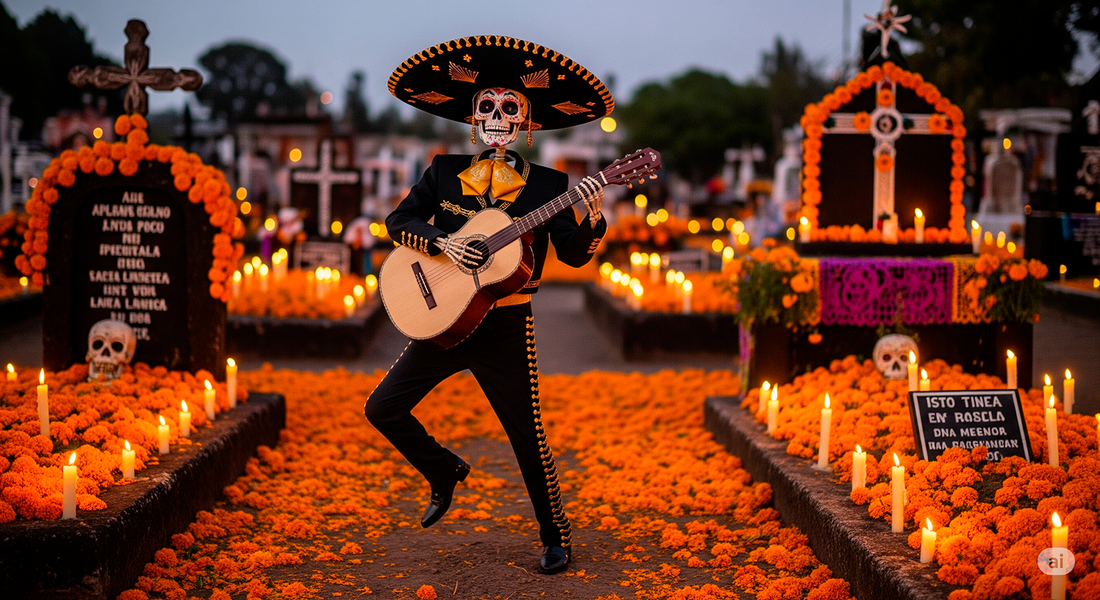
Mexico's Day of the Dead: A Celebration of Life and Memory
PAOLA SEGUEL PLATEOShare
The Day of the Dead is one of the most emblematic and moving festivities in Mexico, recognized by UNESCO as Intangible Cultural Heritage of Humanity. Far from being a sad occasion, it is a vibrant celebration of life and a tribute to loved ones who have passed away. Instead of mourning their absence, they are welcomed back into the world of the living for a brief and magical period.
Origins and Meaning
The roots of the Day of the Dead can be traced back to ancient Mesoamerican cultures, such as the Aztecs, Mayans and Purépechas, who already honored death and their ancestors. With the arrival of the Spanish and Catholicism, these traditions merged with the Christian festivities of All Saints' Day and All Souls' Day, giving rise to the celebration we know today.
The heart of this holiday lies in the belief that, once a year, the veil between the worlds of the living and the dead becomes thinner, allowing the souls of the deceased to return to their homes to visit their families.
Key Elements of an Altar of the Dead
The centerpiece of the Day of the Dead is the altar or ofrenda, a colorful and elaborate construction that is erected in homes to receive spirits. Each component has a deep meaning:
- Cempasúchil (Flower of the Dead): Its bright orange petals and scent guide souls from the cemetery to the altar.
- Candles and candles: The light of the candles illuminates the way back for the deceased and symbolizes faith and hope.
- Incense or Copal: Its smoke purifies the environment and raises prayers.
- Water: To quench the thirst of souls after their long journey.
- Salt: A symbol of purification.
- Pan de Muerto: A delicious sweet bread, often decorated with bone shapes, that represents fraternity.
- Sugar Skulls: Skull-shaped sweets, often named after the deceased or living people, reminiscent of the sweetness of life and the acceptance of death.
- Favorite Food and Drink: The food and drink that the deceased enjoyed in life is placed, so that they can delight in their flavors and aromas once again.
- Photographs: Images of loved ones who are honored.
- Personal Objects: Belongings of the deceased that remember him.
- Papel Picado: Paper flags with intricate openwork designs that represent the fragility of life and the joy of the holiday.
How It's Celebrated
The celebration of the Day of the Dead varies from region to region of Mexico, but generally includes:
- Cemetery Visits: Families clean and decorate the graves of their loved ones with flowers, candles, and offerings, spending the night at the cemetery, sharing stories and music.
- Parades and Festivals: In cities like Mexico City, large parades and festivals are held full of color, music, catrinas and skull costumes.
- Family Coexistence: It is a time for families to get together, remember their ancestors and share special meals.
Beyond the Holiday: A Message of Life
The Day of the Dead is a reminder that death is a natural part of the cycle of life and that the bonds with our loved ones endure beyond physical existence. It is an opportunity to celebrate the memory, legacy, and love that binds us to those who are no longer physically with us.
In your store, you can find products inspired by this beautiful tradition, which will allow you to bring a little piece of this vibrant culture to your home or loved ones. Let's celebrate life and memory!

